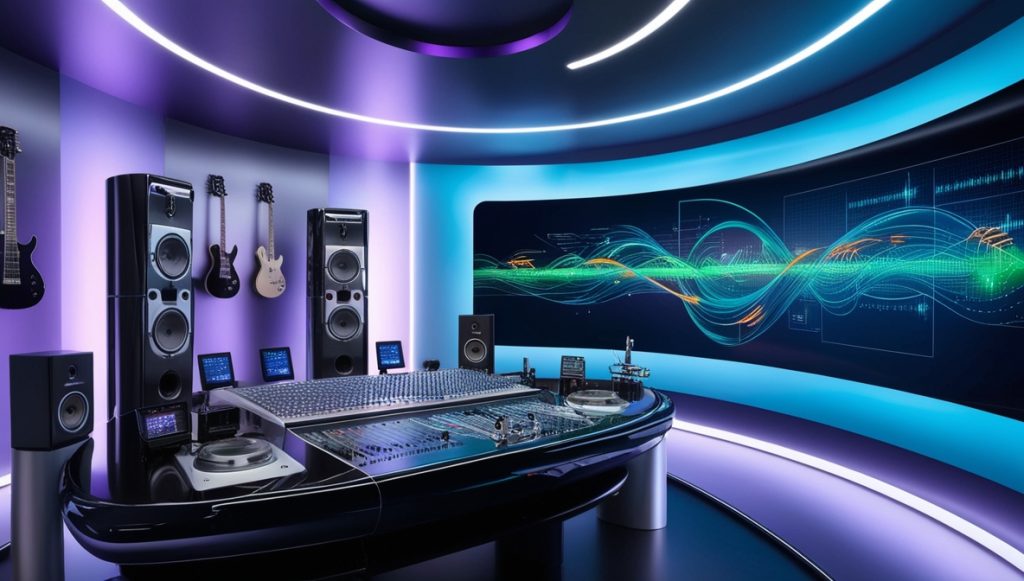Technology has played a transformative role in the development, production, and distribution of music, revolutionizing how it is created, experienced, and shared. From the invention of musical instruments to the rise of digital audio workstations and streaming platforms, technological advancements have reshaped the music industry and continue to push the boundaries of what is possible in music creation and consumption. Below, we explore the many ways technology has influenced music.
The Evolution of Musical Instruments
The role of technology in music can be traced back to the invention of musical instruments. The development of new materials and techniques over centuries allowed for more sophisticated instruments with greater tonal range and precision. Early technological innovations, such as the creation of the piano in the 18th century, had a profound impact on music composition and performance, offering musicians the ability to express a wider range of dynamics and emotions.
In the 20th century, the invention of electronic instruments, such as the theremin, synthesizers, and electric guitars, opened new possibilities for sound production. These instruments allowed musicians to experiment with tones and effects that were previously unimaginable. Artists like Jimi Hendrix and Kraftwerk pioneered the use of electric and electronic instruments in rock and electronic music, inspiring new genres and sonic landscapes.
The Rise of Recording Technology
One of the most significant technological advancements in music has been the development of recording technology. The invention of the phonograph by Thomas Edison in 1877 marked the beginning of recorded music, allowing people to listen to music at home rather than exclusively in live settings. Over time, recording technology evolved from vinyl records to magnetic tapes, CDs, and eventually digital formats like MP3s.
The shift to digital recording in the late 20th century revolutionized music production. Digital audio workstations (DAWs) such as Pro Tools, Logic Pro, and Ableton Live became the standard tools for recording, editing, and producing music. These platforms offered unprecedented control over every aspect of the music-making process, enabling producers and musicians to experiment with sound manipulation and complex arrangements. What once required a full studio with expensive equipment could now be achieved with just a computer and a few plugins, democratizing music production and allowing independent artists to create high-quality recordings from their homes.
The Impact of Auto-Tune and Sound Manipulation
Another technological advancement that has had a profound impact on music is the introduction of pitch correction software like Auto-Tune. Originally developed as a tool to correct minor pitch errors in vocal recordings, Auto-Tune has become an iconic sound effect in its own right, used creatively by artists like T-Pain, Kanye West, and Cher to produce robotic, otherworldly vocal effects.
Sound manipulation tools like Auto-Tune, reverb, delay, and distortion have expanded the possibilities for sonic experimentation, allowing musicians and producers to push the boundaries of traditional music-making. The ability to manipulate and edit sounds to such a degree has led to the creation of entirely new genres, including electronic dance music (EDM), ambient, and glitch music, which rely heavily on digital processing and manipulation.
Music Distribution and Streaming Platforms
The advent of the internet and digital distribution platforms has fundamentally altered how music is consumed and shared. In the past, artists relied on physical media like records, cassettes, and CDs to distribute their music. Today, streaming platforms such as Spotify, Apple Music, and YouTube have become the primary means by which listeners access music. These platforms offer instant access to vast catalogs of music from all over the world, making it easier than ever for artists to reach a global audience.
For musicians, streaming platforms have provided both opportunities and challenges. While these platforms have made music more accessible, they have also disrupted traditional revenue models, with artists often receiving only a fraction of a cent per stream. As a result, many musicians now rely on live performances, merchandise sales, and crowdfunding to generate income.
Artificial Intelligence and Music Creation
Recent developments in artificial intelligence (AI) have also begun to influence the music industry. AI-driven tools like Amper Music and OpenAI’s MuseNet can compose music autonomously, generating songs and melodies based on input parameters. While these tools are still in their infancy, they raise intriguing possibilities for the future of music creation, where human composers and AI may collaborate to create entirely new forms of musical expression.
AI is also being used in areas such as music recommendation algorithms, which help listeners discover new artists and songs based on their preferences. Services like Spotify and YouTube use machine learning to analyze user data and curate personalized playlists, enhancing the listener’s experience and expanding their musical horizons.
Live Music and Virtual Concerts
Technology has also revolutionized live performances. Advanced sound systems, lighting, and visual effects have transformed concerts into immersive experiences. More recently, the COVID-19 pandemic accelerated the rise of virtual concerts, where artists performed live to audiences via streaming platforms or virtual reality environments. These concerts allowed fans to experience live music safely from their homes and opened up new possibilities for global accessibility to live music events.
Conclusion
Technology has fundamentally shaped the music industry in ways that were once unimaginable. From the invention of musical instruments to the development of digital recording software, streaming platforms, and AI-generated music, technology has expanded the boundaries of music creation, distribution, and consumption. While it presents challenges—particularly in terms of artist revenue—it also offers unprecedented opportunities for innovation, collaboration, and global connection. As technology continues to evolve, so too will the landscape of music, ensuring that this art form remains vibrant and transformative for generations to come.



